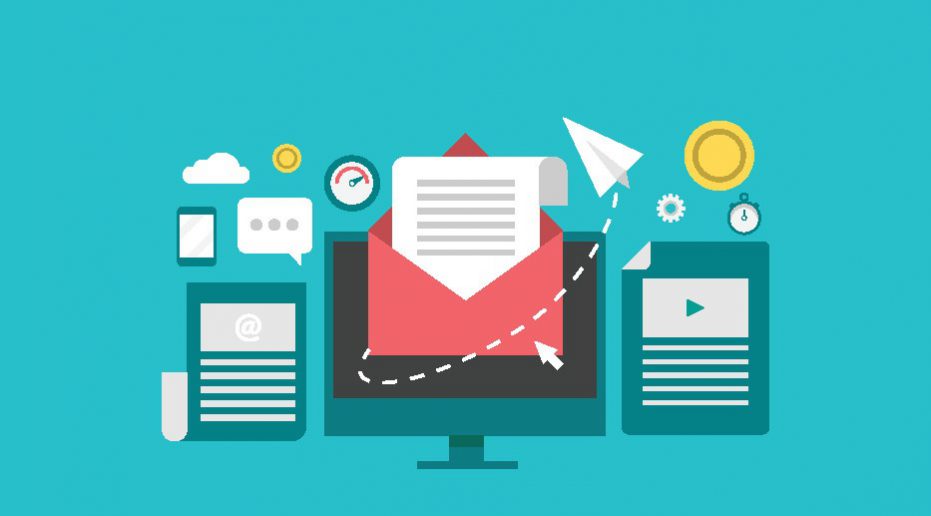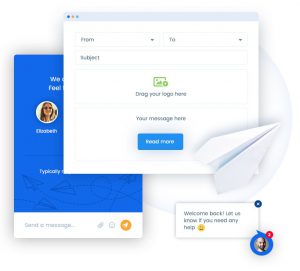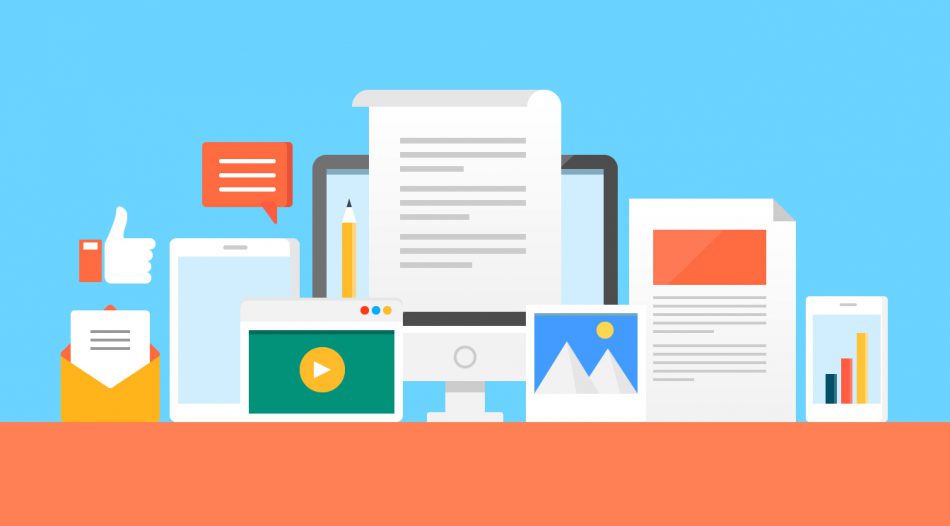
If you’re looking to scale up your marketing activities and grow your business, then you need to be considering marketing automation. Automated marketing activities are the rule rather than exception these days, and we’ve all experienced it from the customer perspective in the form of automated emails when we purchase a product or sign up for a new service.
But there’s much more to effective marketing automation than these basic email triggers. If you’re reading this post you might be a marketing manager or strategist looking to improve your automated campaigns, or maybe a small business owner just getting started with email automation and on-site pop-up messages. Effective marketing automation is also of interest to sales teams, since its ability to streamline generating and qualifying leads can make sales activities much more effective.
If you want to review the basics, you can read our marketing automation overview and learn about how to get started with basic automation functions for your own business, and read our “plain English” guide to marketing automation if you want a better understanding of the underlying concepts. Read on to learn more about industry-tested best practices for marketing automation.
Quickly jump around this post with this index:

The “sales funnel” or “purchase funnel” is one of the most important business principles for driving effective marketing and sales strategies. When designing automated marketing campaigns, it’s critical to understand the unique nature of the sales funnel for your business.
Using the experience and data available to your business, consider what a lead journey looks like for your particular industry. What is the information that is most effective at moving customers from interest to action? What sorts of emails have been most successful at engaging customers and driving ongoing loyalty after a purchase?
Use your marketing tools to gather leads, and then use automated processes to pre-qualify those leads as much as possible. What that looks like will depend on the nature of your business, but it can often involve practices such as using chat bots or forms to gather information on a site visitor’s need, company role, and approximate budget. With this information you can score those leads based on how ready they are to actually complete a purchase. This process will accelerate the speed at which you can identify MQLs (marketing qualified leads), which refers to contacts that are interested in a product or service but that aren’t ready for direct interaction with the sales team yet.
“Lead scoring” is an important part of moving customers through your sales funnel. Lead scoring refers to rating or ranking leads based on their qualities and behavior, in order to prioritize them. As detailed in G2’s explainer article, “The main goal of lead scoring is to save salespeople time and maximize the overall efficiency of the sales prospecting process.” The scoring itself can be a time-consuming process if you don’t have the right tools, though, so this is another area where marketing automation techniques are key.
Automated lead scoring can combine elements like “number of website visits,” “expressed budget range,” and “signed up for a free trial” in order to produce a single “score.” High scores can indicate that a contact is ready for your sales team to prioritize and reach out to proactively; at this point they have graduated to “sales qualified leads” or SQLs.
Once you have scored and pre-qualified leads with your marketing team and tools, pass those leads to your sales development representatives to move leads through the purchase funnel. Your sales team can continue to nurture those leads individually, providing a personal touch where it makes the most difference (and has the greatest impact on your bottom line).
Use strategies like these, combining automated tools with individual service, to get the most out of marketing automation. Keep the sales funnel of your business in mind when planning these hybrid manual/automated workflows and you’ll have the best chance of achieving success.

“Personas” are at the core of effective marketing automation. Using the data you have on your existing customers and potential leads, you should be analyzing and segmenting your contacts into manageable groups with similar traits. In your CRM software, tag your contacts with key information that will be useful in shaping future communication with them.
The specifics of segmentation will depend on your particular business. As an example, a recent Forrester survey of consumer attitudes segmented people into “Progressive Pioneers” and “Convenience Conformers.” These different types of consumers value different things and have different intentions going forward, and having that understanding about their personas helps you tailor and target your marketing automation activities.
For an ecommerce business, customer segmentation is often largely driven by the types of products your customers purchase. For a clothing retailer, someone who buys a heavy coat as the autumn season begins might be tagged as a “cold weather shopper,” and could be targeted with product announcement emails for more winter gear in the coming months.
In some ways automation is the opposite of personalization, because it’s all about designing marketing campaigns that can be applied to large groups of people. In a world without cost or labor concerns you could tailor your marketing individually for every potential lead, but that just isn’t practical. A good set of personas and psychographic segmentation of your contacts helps you to strike an effective balance between automation and personalization.
Live Chat Vs. Chat Bots: Strengths, Weaknesses, and How to Use Them Together
We’ve discussed the power of live chat and chat bots individually before, and the advantages of each only grow when they’re deployed together on your site. Automated bots can handle a high volume of questions, freeing up your live chat teams to focus on delivering high quality individual service and support when it’s needed.
AI-based chat bots can provide immediate, 24/7 responses to site visitors, offering a superior customer experience even outside of normal “business” hours. These automated agents can gather visitor contact information and even ask questions to pre-qualify leads, potentially speeding up the sales process.
During hours in which you have live agents available, your chat bots still play a valuable role. The bots can assist customers with self-service options so they don’t need to wait “on hold” for a live chat agent, effectively reducing the workload on your live chat team and improving customer experience overall. And well-trained chat bots can also be used to market different services and products based on visitor input and customer data, creating automated cross-selling and upselling opportunities.
Chat bots are also effective at marketing specific products or services once you have visitors on your site at the “interest” stage of the sales funnel. For example, you can deploy chat bots that encourage visitors to “Learn more about…” key offerings from your company, inviting them naturally into a conversational marketing interaction.
With Formilla you can install a live chat plugin on your existing site, and you’ll get our AI-based Helper Chat Bots as an added feature.
A content-rich newsletter is one of the most useful emails your company can send out. If you already have an active blog or a YouTube channel, you should be packaging this content into emails that you send out to your contacts via email.
These newsletter emails offer real value to your customers by sending them content matching their interests. In this way, newsletters can function as a lead magnet: offering valuable and relevant information in exchange for a customer’s contact information. These content marketing efforts also provide an important break from a continual stream of transaction-oriented emails from your company.
Depending on how much content you have and how granular you want to get, you can even design different types of newsletters aimed at different personas. For example, a site focused on consumer technology might have separate newsletters for smart home gadgets, appliances, and gaming, since tailored experiences like these are the most likely to appeal to your subscribers.
Newsletter signups entice visitors to share their contact information with you, a key step in moving leads from “interest” to “action.” Quality content emails also keep your potential customers engaged with your brand, and when done right can help nurture leads and keep your business top-of-mind.
If you’re reading this article on our Formilla blog right now, then you can find a newsletter signup box either alongside or underneath the post itself. Hopefully you’re on this page because you’re finding this article informative and useful – so if you’d like articles like this delivered to your email inbox, go ahead and share your email address to sign up for our newsletter.

Though “automation” usually makes people think of cold and impersonal things, marketing automation doesn’t have to give people that impression when it’s done well. You can use customer data to effectively personalize your automated marketing activities, and this touch can result in a big jump in customer engagement.
Data from Experian Marketing gathered over the course of a year from 2015 to 2016 demonstrated that “brands that included personalized subject lines experienced 27 percent higher unique click rates, 11 percent higher click-to-open rates and more than double the transaction rate compared with other promotional mailings.”
Automated email subject lines can be personalized by including customer names or interests. A subject line that reads “Hey John, save 20% on your next order of printer ink” grabs attention by addressing the customer personally and calling out a product we know he’s browsed, purchased, or added to his cart in the past.
Automated emails can also be sent on specific time triggers in a way that comes across as personal and specifically tailored for the recipient. Birthday greetings and subscription anniversary reminders are examples of common ways businesses use email automation to remain top-of-mind for leads and customers.
Emails are also a popular tool for re-engaging lapsed customers. Automated emails can be set up to reach out months after a customer makes an order, offering promo codes or advertising related products. And service providers, like us at Formilla, can send out emails to lists of former customers when new features are added which might better fit an old client’s current needs.
Email drip campaigns are automated emails designed to be sent as a series in response to specific triggers. Drip campaigns help keep your leads and customers engaged with your company over time, with an eye towards moving them through the sales funnel to an ultimate conversion and then turning them into loyal customers.
One of the most common uses of email drip campaigns is to greet and “onboard” new customers after they have signed up or made their first purchase. A campaign might consist of a “Welcome” email and then a series of follow-up emails that are automatically sent every few days helping new customers understand all that your company has to offer.
We use an automated onboarding process like this for customers that sign up for a free trial of Formilla. First we’ll send a welcome email, then we’ll follow up with emails that introduce gradually more advanced features of our live chat, chat bots, and marketing automation services.

Drip campaigns can be adjusted based on specific customer action (or inaction) triggers.For Formilla, if we see that you’ve created a chat bot but haven’t added more than five questions, we’ll follow up with suggestions about how and why to add more questions. We do this in order to help our customers get the best experience from their free trial period.
Multichannel marketing campaigns are those that extend across different forms of customer outreach and communication, including email, on-site messaging, social media, banner advertisements, and more.
There are two general ways to approach multichannel marketing strategies. The most common is to diversify your messaging. Different channels are more effective at reaching different types of people, and effective marketing strategies will take those relative strengths into account. And while CMOs are often far removed from different communication platforms, marketing managers and social media specialists should have a good sense of what works and what doesn’t. LinkedIn, for example, is known to be especially good at messaging aimed at professionals, while Twitter success often comes from a less formal approach. Not every marketing campaign is right for every platform, and you should lean into the strengths of your different communication channels rather than fighting against the grain.
 The second and less common approach to multichannel marketing is to unify everything. This is often seen in the case of a major seasonal sale or new product release, when all of your marketing efforts are focused on the success of a single campaign. You often see unified multichannel marketing efforts around a company’s biggest product launches of the year, or Black Friday sales for ecommerce sites. The advantage of unified marketing messages is that as potential customers move around the web they’ll be repeatedly reminded of the same promotion or product, increasing the likelihood that potential leads will actually convert.
The second and less common approach to multichannel marketing is to unify everything. This is often seen in the case of a major seasonal sale or new product release, when all of your marketing efforts are focused on the success of a single campaign. You often see unified multichannel marketing efforts around a company’s biggest product launches of the year, or Black Friday sales for ecommerce sites. The advantage of unified marketing messages is that as potential customers move around the web they’ll be repeatedly reminded of the same promotion or product, increasing the likelihood that potential leads will actually convert.
Regardless of your approach to multichannel campaigns, marketing automation will be a key part of ensuring success. Properly segmented customer personas help you plan and execute diverse automated marketing campaigns across email, on-site messaging, and social media ads. At their best, multichannel marketing efforts add up to more than the sum of their parts; using data to deliver the right message to the right people at the right time can make all the difference.

Much of your automated marketing will be designed to bring in new visitors and to re-engage existing customers – and that’s mostly something that happens away from your actual site. Social media marketing and automated email campaigns go out and get people, but marketing doesn’t stop when a visitor arrives on your site.
“In-app” messages are a targeted form of marketing automation that are displayed on your actual site. They can come in the form of pop-ups, overlays, or menu bars – and it’s a good idea to continually A/B test different ways of displaying these messages to see which are the most effective at reaching and engaging your site visitors.
These types of messages are sometimes referred to with the catch-all term “pop-ups,” but that term is also used for a wide variety of spammy and obnoxious advertisements we all have to dodge while navigating the web. That’s not how you should think about in-app messages. Instead, they should be more like the signage in a physical store, calling out specific things of interest to those who are already browsing, with the added advantage that they can be tailored and targeted to specific customer groups through your marketing automation platform.
“In-app” messages can also include mobile push notifications. If your business has a mobile app that customers download, the ability to reach out with timely, valuable information through notifications is one of the most powerful forms of marketing ever developed. Big companies like Starbucks use automated mobile notifications to do things like alert customers of “happy hour” promotions or seasonal drinks.

If you aren’t diligent, it’s possible for automated marketing activities to simply increase in volume over time. It’s often easier for a business to start a new automated marketing campaign than to end one, especially since automated campaigns don’t require daily attention or effort from your employees. Care needs to be taken to regularly evaluate the effectiveness of marketing automation efforts to make sure you’re focusing on quality, not overwhelming your potential customers with quantity.
The line between “email marketing” and “spam” can seem blurry, but there’s actually a distinct difference built on legal principles. As explained by EvoWise and defined by the FTC, email marketing must be sent with permission from the receiver (usually because they have signed up and agreed to receive emails from a specific company in the past), must include an unsubscribe option, and can’t have a deceptive subject line, among other things.
But from a day-to-day customer perspective, email marketing doesn’t need to violate any actual laws to feel like spam. According to data from MarketingSherpa, the top three reasons customers unsubscribe from email lists are:
With those complaints in mind, it’s easy to see how even well intentioned automated marketing emails can drive customers to unsubscribe. Customers want fewer, better emails from your company.
So how often should you actually send promotional emails? MarketingSherpa has done some research on that question too. Their survey revealed that “86% would like to receive promo emails at least monthly, and 15% would like to receive promotional emails every day.”
If you’re just getting started with email automation, the data indicates that you should be sending at least one promotional email a month as a baseline. And it’s likely that one per week wouldn’t be regarded as “too many” by the average customer. But it’s possible to use marketing automation to make business emails more effective and more welcome by paying attention to metrics like open rate and click-through rate. Certain customers will engage with your emails more often, and you can tailor your email strategy to send more emails to this segment of customers without overloading your entire email list.
Data shows that you should be sending at least one promotional email a month for most industries. Click To TweetWhile emails are the most studied form of marketing automation, you should apply the same concern for data and effectiveness to all your automated activities. If nobody is clicking on a pop-up message on your site, adjust it or remove it to provide a better customer experience. If customers only ever engage with a chat bot on specific pages on your site, consider why that is, and whether you should make the bot more or less prominent on different pages. A/B testing and continual optimization are key here, with a focus on increasing efficiency and engagement rates.
Taken as a whole, marketing automation is most effective when it is used along with your CRM software to align your marketing, sales, and customer service efforts. Ideally, your sales team will know what marketing activities brought a prospective lead to your business, so they know what appealed to them in the first place and can act accordingly. In the same way, it’s useful for your live chat customer service team to be able to check what automated emails a customer has recently received, since that customer may come to your site with questions about products featured in those emails.
Aligning the different aspects of your business is key to properly nurturing leads and guiding them through the sales funnel. Your marketing, sales, and service teams should be speaking the same language to provide a sense of consistency and professionalism throughout your customer interactions. Provide opportunities for your sales development representatives to be aware of the automated marketing activities that are being targeted at different groups, and use the feedback gathered by your customer service teams to inform and guide future automated marketing campaigns.
Sign up for a free trial of Formilla today to get started with marketing automation, live chat, and chat bots on your site.
Once you have a marketing automation platform set up, the next step is to begin optimizing and improving your processes. Implement some basic email drip campaigns and on-site chat bots, and analyze your customer data to see what’s working and what isn’t. Create segments and personas in your CRM software, and start targeting automated marketing activities at the right groups.